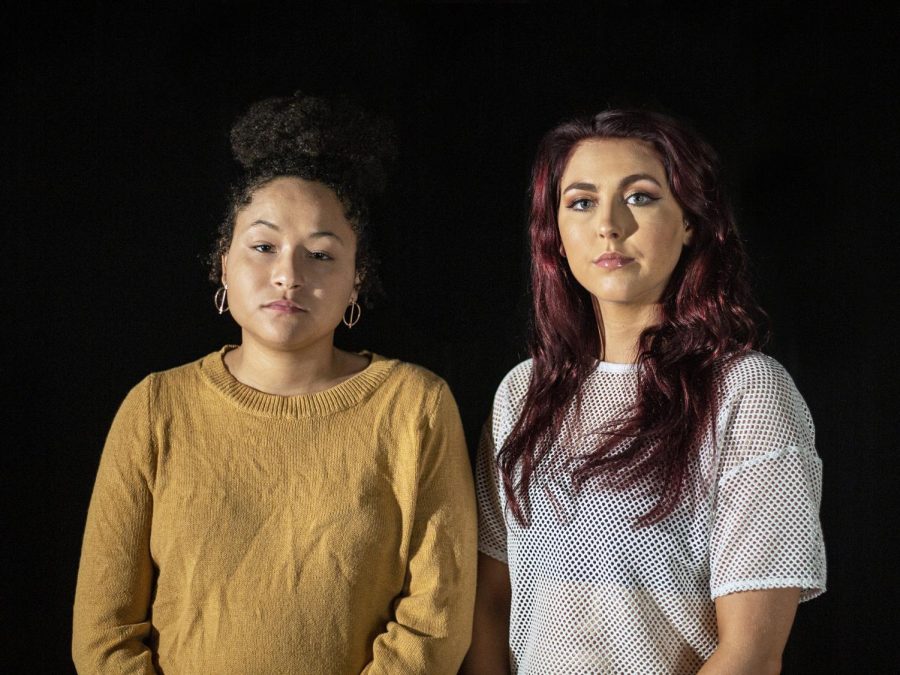When Women Aren’t Heard in the Doctors Office
March 28, 2020
According to the United States National Library of Medicine Institute of Health, implicit bias plays into patient interactions in many ways. As a result, patients who come from underrepresented groups or communities are disproportionately affected by those biases.
A research article in the Journal of the National Medical Association reveals that black women die at three to four times the rate of white women from pregnancy-related complications. Failure to transition from obstetrical to primary care was pointed out in the article as a big issue.
According to another study in the National Library of Medicine Institute of Health, researchers found that other common barriers that women of color face include being uninsured, poverty and lack of access to a primary doctor. The study suggested that access to a primary doctor is crucial to addressing preventive care.
Juliemar Medina, a woman of color, went to the University of Utah Sugarhouse Instacare on Jan. 25, clutching her stomach in paralyzing pain. In the 40 minute wait period, Medina kept hot flashing and later threw up in the bathroom while waiting for a doctor to see her.
Medina, a sophomore at the U studying environmental studies and urban ecology, had gone to a work training on campus that day. While sitting through the training, Medina started to feel pain.
At first, it was bearable. She acknowledged it, recognized it’s familiarity as many women do each month. But quickly Medina felt something was going to go wrong. She debated going to the doctor because of her prior experiences of being dismissed in that setting, knowing this visit would be no different.
“[The doctor] looks me in the eye and she says, ‘Yeah that’s not normal. You should see a primary care doctor.’ With the lack of empathy or any care, whatsoever,” Medina said.
She felt she wasn’t being listened to. As an out-of-state student, she told the doctor she didn’t have a primary care provider in Utah. And the physician didn’t provide a referral either.
The physician sent her home with a couple of Tylenol pills and no referral. She was still in pain and had a new bill she couldn’t afford.
“Knowing that I’ll have to keep living with this pain until I get hold of a primary doctor and then going through that process hoping they believe me — it’s just frustrating,” Medina said.
Feminization of Pain

when she visited the U’s Sugarhouse Instacare facility with severe abdominal pain. (Photo by J. Prather | Daily Utah Chronicle)
According to a 2000 article in the New England Journal of Medicine by Elizabeth G. Nabel, M.D., Medina’s story is not uncommon — women are more likely to be discharged in the middle of a heart attack because of a misdiagnosis. This occurs because symptoms aren’t presented the same way men show them.
According to a survey of over 2,400 women conducted by the National Pain Report, women’s pain is more likely to be dismissed or told it’s psychological.
The historical context behind women’s pain is also important. There’s been an implicit societal reliance on the view that women experiencing pain is normal.
“We have young girls who are told from a young age that being a woman is painful,” said the U’s health and gender researcher Dr. Robin Jensen. She explained this can lead to problems such as misdiagnosis.
“People who have endometriosis, they have a range of health problems that can be alleviated and are not normal,” Jensen said. Yet these women are told, “it’s just how it is.” There’s an internalization of how women are told to see pain because many times these conditions are genetic or hereditary, she explained.
“They’ll say, well all the women in my family feel this way. So my mom told me this is how it is,” Jensen said. “There’s a lot of different messages telling us that the normative state of womanhood is pain and we should get used to it.”
But Jensen said that doesn’t have to be the case.
Communication Barriers

In June 2018 Erika Brcko, a U student studying biology, went to her gynecologist. Her regular doctor had been on maternity leave. Brcko expressed her concerns to the male provider she saw but felt she was being talked at instead of talked to.
“I felt like I wasn’t being taken seriously and my own voice in my own healthcare wasn’t really being heard,” she said.
“There’s a long tradition of having a top-down sense of how medical care works,” Jensen said. “Where you come in as a woman or as a woman of color [and] you’re told what is wrong with you or what isn’t wrong with you.”
Miscommunication of this kind can often lead to cases like Brcko’s or Medina’s, with patients leaving the office feeling dismissed or not heard.
“Teaching people from a young age how to advocate for themselves and their needs, I think that’s especially important for everyone but for young girls for a number of reasons,” Jensen said. “To learn how to say no. To learn how to say this is what I need.”








